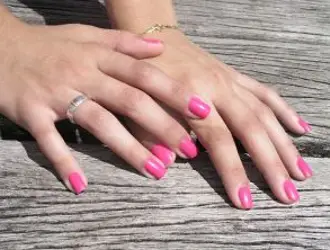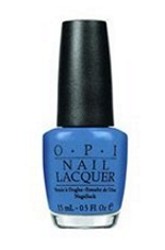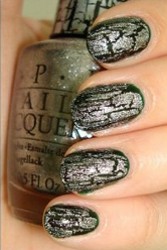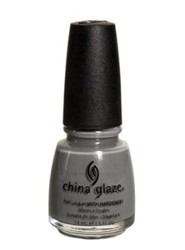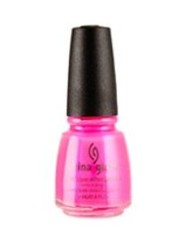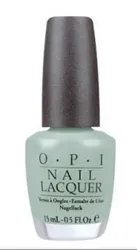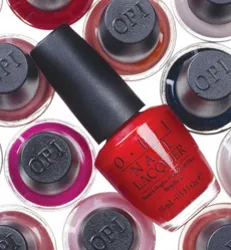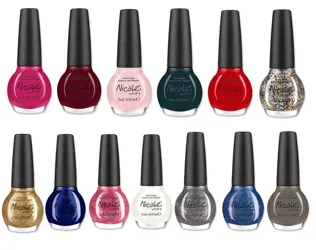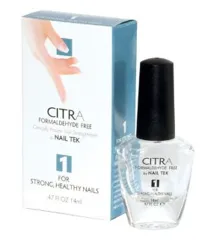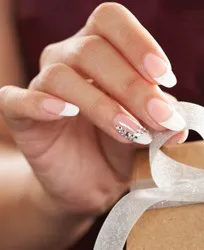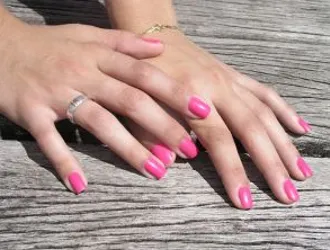
Nail Polish Is Hottest Fashion Accessory Around
Nail Polish Is Hottest Fashion Accessory AroundNail polish is the latest hot accessory in the M&A game according to Evan Clark and Rachel Brown in a Women's Wear Daily article published November 12th of 2010.
Clark and Brown noted that Coty Inc., which already controls roughly half the retail nail market with its Sally Hansen and New York Color brands, is said to be the leading contender to snatch nail lacquer company OPI Products Inc. from the hands of its competitors in an auction.
They point out if Coty doesn’t nail down OPI — the company is believed to be asking upward of $1 billion — the runner-up could be Procter & Gamble Co., the consumer packaged goods behemoth that many consider the most logical partner for OPI because of its nail polish position, which is weaker than Coty. Private equity firms are also circling OPI.
Whoever ends up owning it, the pending OPI deal could be the largest in the history of lacquered nails, trumping Coty’s $800 million purchase of Sally Hansen and New York Color owner Del Laboratories in 2007, and far exceeding L’Oréal USA’s April purchase of Essie Cosmetics, which was thought to be around $100 million. The estimates of OPI’s wholesale volume vary wildly from $180 million to $400 million.
In any event, it is at least five times larger than Essie, which registered $25 million in wholesale sales in 2009, but the $1 billion price tag estimated for OPI would still be a nail care industry stunner. Recent color cosmetics mergers and acquisitions have commanded 1.8 times revenues.
George Schaeffer, OPI’s president and chief executive officer, has adamantly denied the company is on the block. Coty and P&G declined to comment on whether they are interested in the North Hollywood, Calif.-based salon-professional nail polish authority, which is one of the largest privately held beauty companies in the country.
The acquisitive mood prevailing in the nail category — and the aggressive pursuit of OPI in particular — hasn’t fazed nail industry veterans and observers. To them, the brand’s dominance in the professional nail market justifies its appeal.
Outside of Essie, OPI’s closest rivals are Orly International Inc., estimated to generate $40 million in sales; China Glaze, whose privately held parent, American International Industries, is estimated to produce around $200 million in sales, and Colomer Group-owned CND, which co-founder and style director Jan Arnold told WWD generated $60 million in 2009 revenues.
“I don’t find them surprising at all,” said Arnold of the nail polish deals. “The nail category is usually about 10 years behind the hair industry, so it is falling in line behind the consolidation trend.”
“OPI internationally is a phenomenal brand. It would be the cherry on top of anybody’s malt,” said Mark Moesta, vice president of sales for American International Industries.
With a possible sale of OPI, attention is now focusing on CND, which could be the next professional nail brand to get swooped up in an acquisition. Rumors are circulating that Unilever plc is interested in buying the Spanish company Colomer Group, which is owned by European private equity firm CVC Capital Partners and estimated to have generated $499 million in 2009 sales from an assortment of around 42 brands mostly in hair care, including American Crew, Modern Organic Products and Crème of Nature.
Of a potential Unilever pickup of Colomer, Arnold said, “I don’t see anything solid from this side.…Whatever their [Colomer’s] big vision is, especially for their hair care companies, I think it is a good time to be looking at future opportunities for growth.” Paul Matthews, a spokesman for Unilever, said, “We never comment on any rumor or speculation.”
With cash to burn, buyers are scurrying to the nail category partly because it has demonstrated growth during the downturn. Market research firm Kline & Co.’s data show nail polishes gained 14 percent from 2008 to 2009 to around $320 million in U.S. sales at the manufacturers’ level, and posted the only double-digit increase in the “Fundamentally, it’s a growth category and there are fewer competitors,” said Cathy Leonhardt, managing director at Peter J. Solomon Co. “These are great equities."
But Jani Friedman, managing director of the investment banking firm Demeter Group, isn’t wowed by the recent growth in the category because she notes it comes after a soft period in nail product sales. A few years ago, she said, “You couldn’t get arrested with nail. When they came back, it made it look like there is a huge growth curve, but it might be rebounding because of fashion.…When the economy is tough, people tend to focus on fashion, which is almost counter intuitive.”
However, Friedman added, OPI could help an acquirer capitalize on the demand for affordable do-it-yourself at-home beauty solutions that she thinks will last as the recession’s effects fade and a recovery takes hold. “As people look for value, that is one area where they might expect to see growth,” she said. “Even if the economy comes back, if women have been empowered to do it one time, they are probably going to continue to do it.”
The professional nail industry landscape is due for big changes, with large beauty conglomerates swallowing top-rung companies. Most believe that acquirers will swing the balance of the acquired brands’ distribution more heavily toward the mass market domestically and toward international consumers in general. OPI has already shown it can execute a potent multi-distribution channel strategy by extending into mass market retailers with Nicole by OPI and into beauty specialty retail with Sephora by OPI, while still cultivating a nail salon following. OPI is sold in more than 80 countries around the world.
“If a big company is taking a look at OPI, the proposition of taking them retail is delicious,” said Arnold. “If they went retail, then those huge multiples could make sense.”
Beyond distribution moves, Moesta suggested OPI’s new parent could expand the brand into products outside the nail segment. “It is not just buying a nail polish company. It is more than that. There are a lot of things that can be done with that brand,” he said.
The round of nail category acquisitions epitomized by the potential OPI deal probably won’t be duplicated again soon. The remaining brands at the apex of the professional nail market are unlikely takeover candidates. Asked about whether he would part with China Glaze, for example, Zvi Ryzman, president and CEO of American International Industries, said, “I would not consider selling any brand.”
The nail polish brands in the tier below OPI and its ilk are too small — most register less than $10 million in sales — to garner significant interest from either private equity firms or strategic players. But there could be ripple effects from the consolidation of the larger companies in the segment provoking acquisition activity among the smaller brands.
These brands are looking to gain market share in professional nail salons and sense an opportunity if the larger brands vacate or are abandoned by salons or salon distributors as a result of the acquisitions.
Noubar Abrahamian, owner of Los Angeles-based nail polish brand Nubar, said another manufacturer approached him to buy Nubar, but he rebuffed the offer. With or without a partner, he contended Nubar has a lot to gain from an OPI deal. “The original OPI distributors will not remain OPI distributors because they will probably end up going to Coty’s distributors or whoever ends up with OPI,” said Abrahamian. “More than likely they [distributors] will come to us as their next supplier of goods.”
Minx Inc., which markets colorful nail coverings applied at nail salons, is viewed as one of the most desirable small brands for a potential buyer. Dawn Lynch-Goodwin, who founded the Oceanside, Calif.-based company with Janice Jordan, isn’t selling, at least not yet. “We both love what we are doing at the moment. It would be hard to change that for something else. Never say never, but we are not looking for it,” she said.Social Media Network Information
Please follow us on Twitter at: https://Twitter.com/HairBoutique. I look forward to meeting new people from all walks of Twitter and learning from their Tweets.


